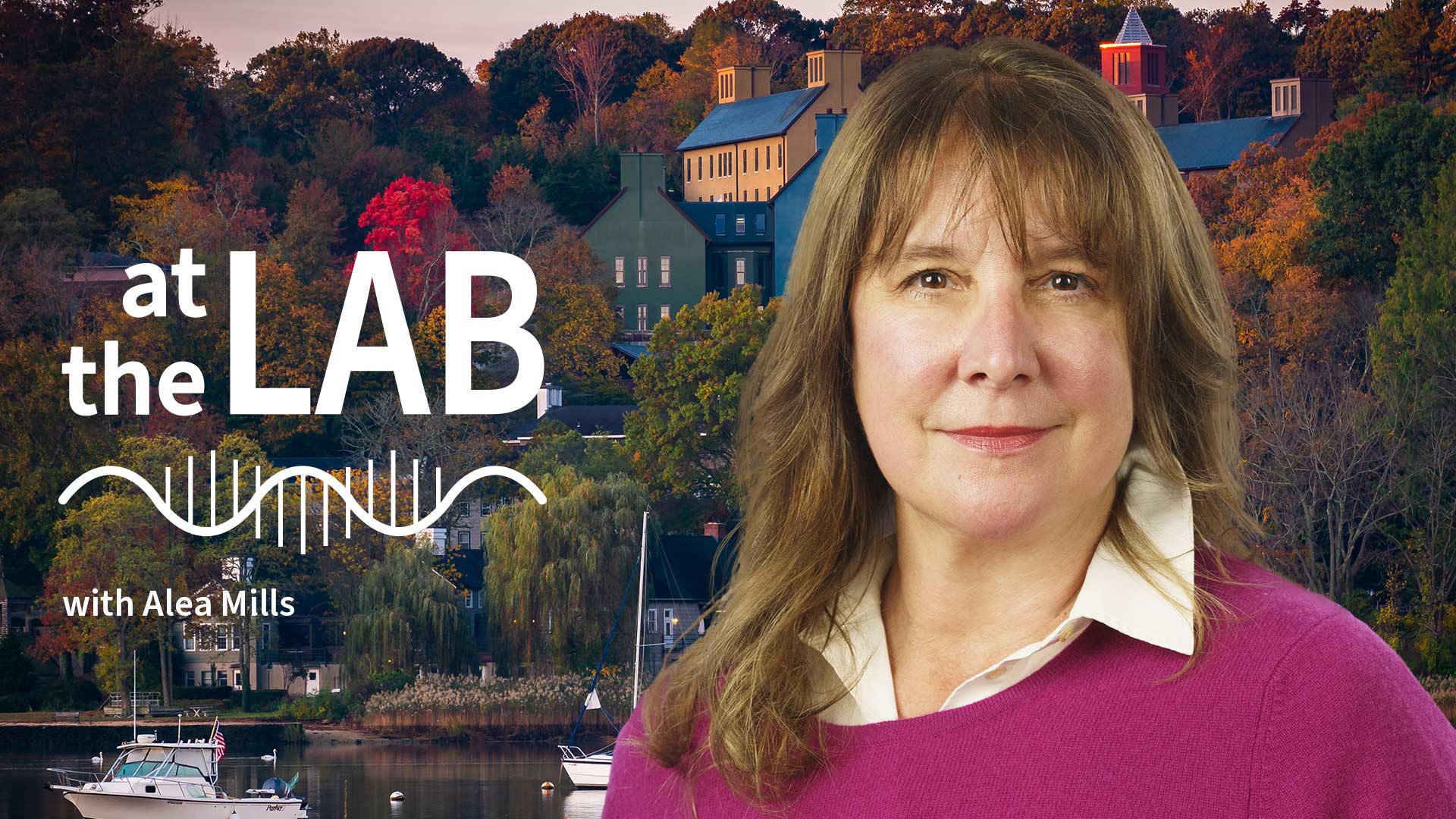If you’ve heard of glioblastoma, you might’ve heard of it in reference to some of the lives this brain cancer has claimed. Beau Biden’s is one of several high-profile deaths in recent decades. CSHL Professor Alea Mills has spoken to ABC Eyewitness News about the deadly disease. Now, she brings us deeper inside her team’s findings At the Lab.
Read the related story: Cracking the mystery behind a deadly brain cancer
Transcript
Sara Giarnieri: You’re now At the Lab with Cold Spring Harbor Laboratory. I’m Sara Giarnieri, and this week At the Lab, “Putting the brakes on brain cancer.”
{A car drives along.}
SG: If the cells in your body are like cars on the road, then the P53 protein would be akin to the car’s brakes.
{Suddenly, the car comes screeching to a halt.}
SG: It helps to slow cell duplication, keeping the cells from dividing over and over, or driving out of control.
SG: Mutations in the gene that produces P53 are the most common genetic cause of cancer. However, in most cases of glioblastoma, P53 looks just fine. So what gives? How did the brakes get cut in this deadly brain cancer? CSHL Professor Alea Mills may have arrived at an answer. To get there, she had to look beyond genetics.
Alea Mills: It’s not like a genetic mutation affects if a patient lives or dies here. We wanted to search for an Achilles heel of vulnerability—something that’s vital to that tumor being so aggressive and so lethal for these patients. So, if they don’t have genetic mutations, maybe they have epigenetic mutations—not affecting the DNA sequence itself, but something above and beyond the genome.
SG: The Mills lab utilized tools made by CSHL Professor Christopher Vakoc’s team. You might remember from a recent episode how Vakoc’s lab developed a method using CRISPR to screen for proteins that could be implicated in different kinds of cancer. Narrowing their search to the epigenetic machinery that packages our genome, the Mills lab went looking for whatever was cutting the brakes on P53.
AM: We found a new target, and that’s BRD8. Even though P53 is not mutated like it is in lots of other solid tumors, BRD8 is basically annihilating it. So it’s shutting down these brakes, and that’s how it’s maintaining the glioblastoma cells. But you can fix it all.
{Machines toil away in an autobody repair shop.}
AM: We found we can target BRD8 and get reestablished P53. So we’re unleashing P53’s tumor suppressive activity by targeting BRD8.
SG: In other words, it’s like they reconnected the brakes. And that made the brain cancer stop growing in mice and lab-grown tumor cells.
SG: The journey from potential drug discovery to drug development often has many twists and turns. But you can’t get far without a working vehicle. And Mills’ discovery may provide just that. Its starting location: right here, At the Lab.
SG: Thanks again for listening. If you like what you heard, please subscribe to get another fascinating science story delivered each week. You can also find us online at CSHL.edu. For Cold Spring Harbor Laboratory, I’m Sara Giarnieri, and I’ll see you next time At the Lab.
